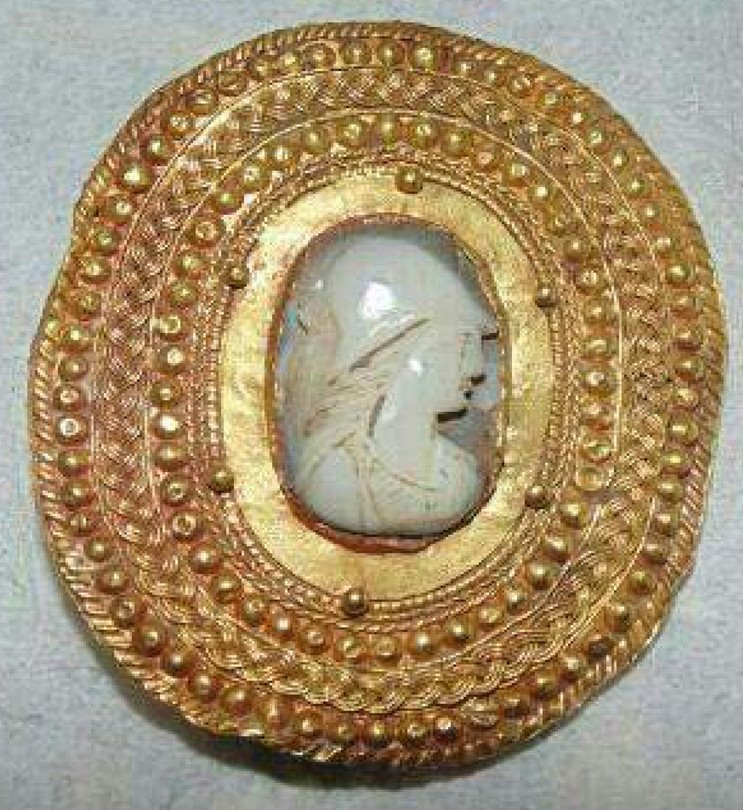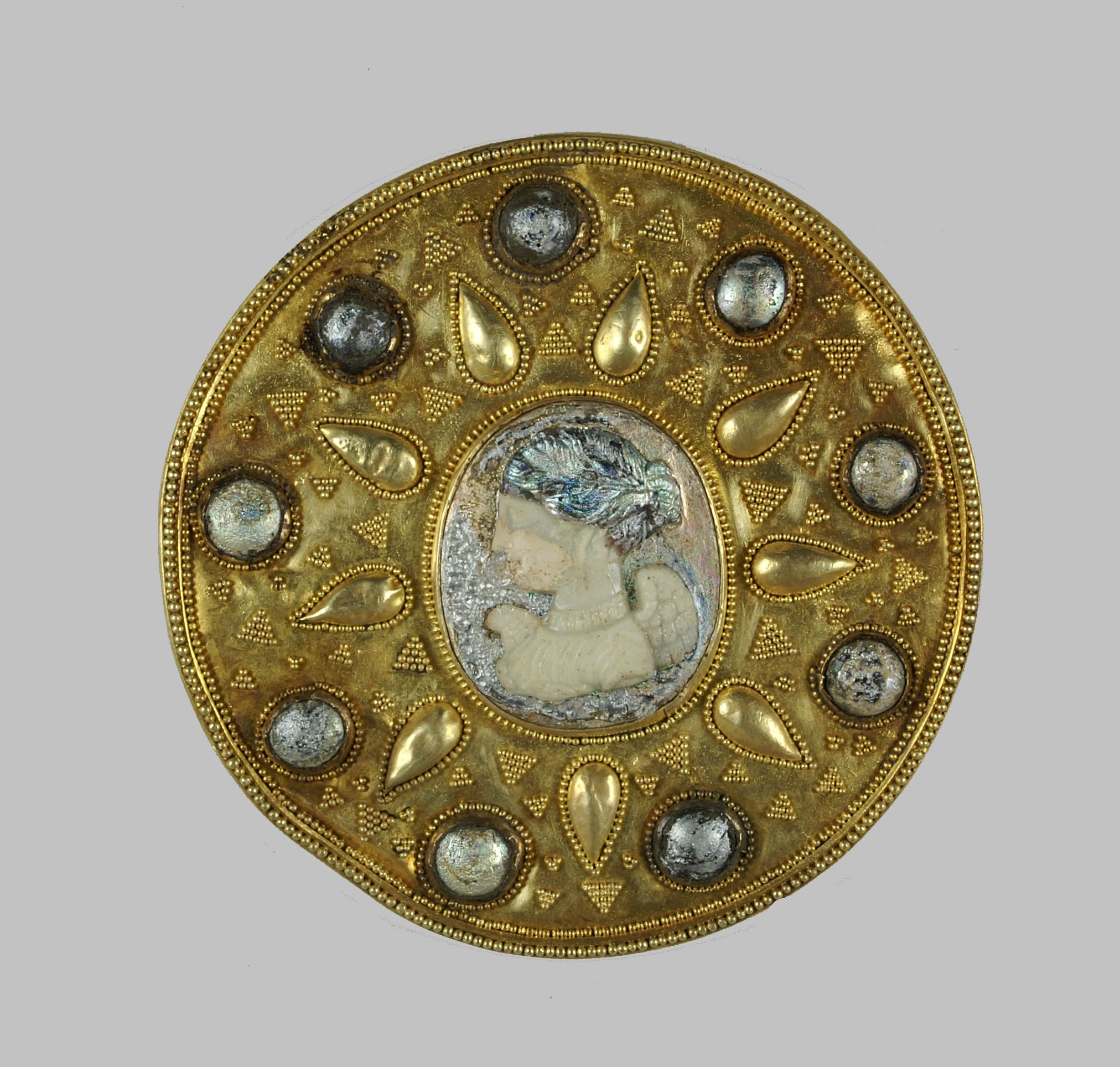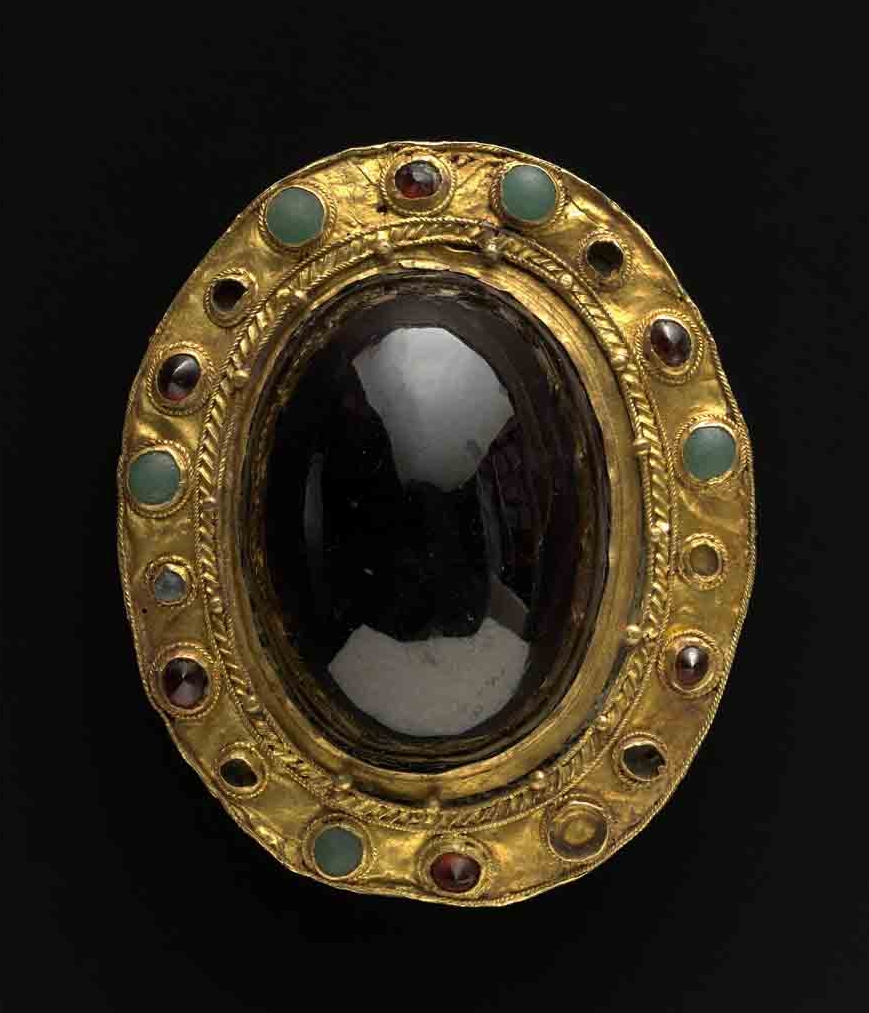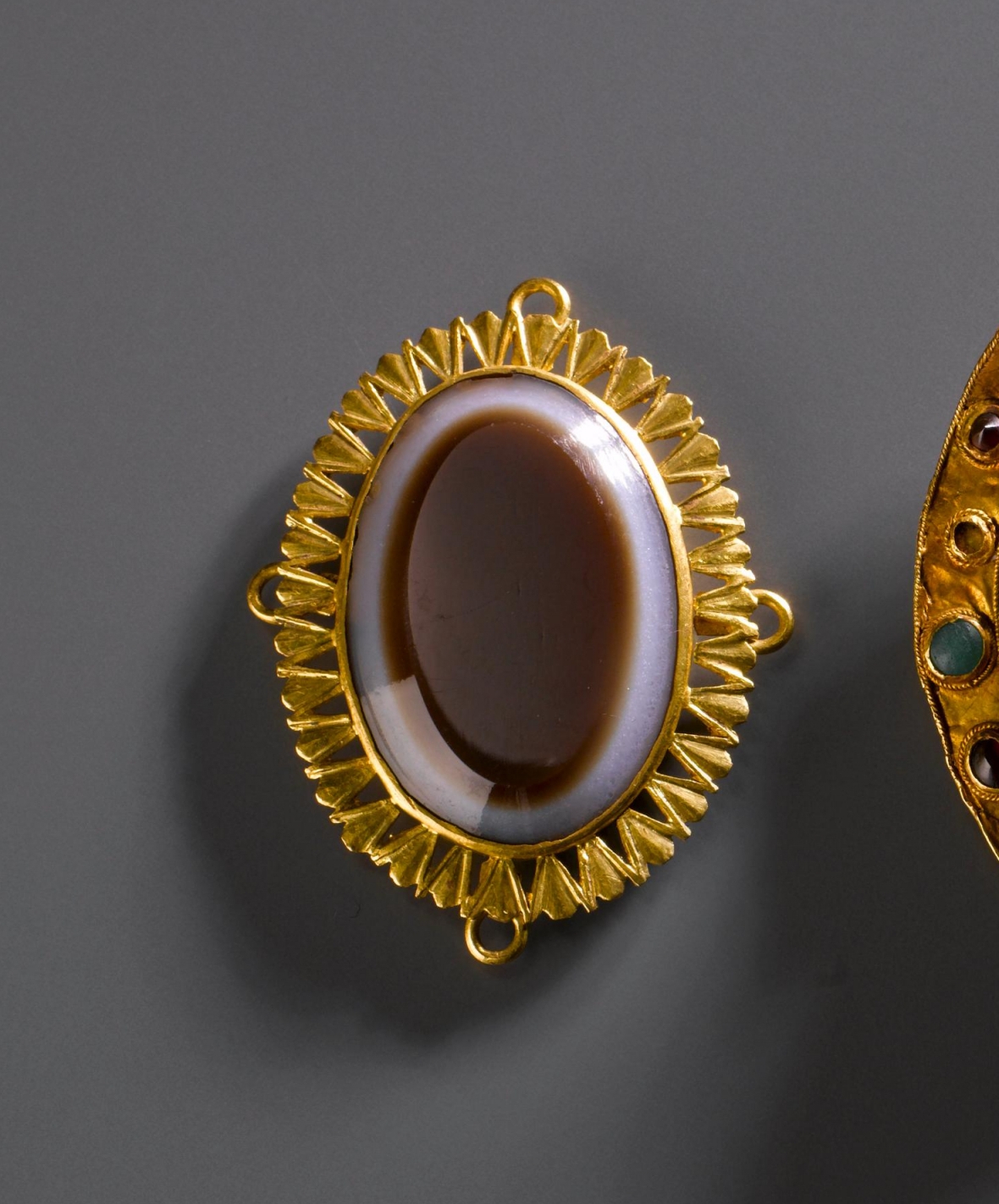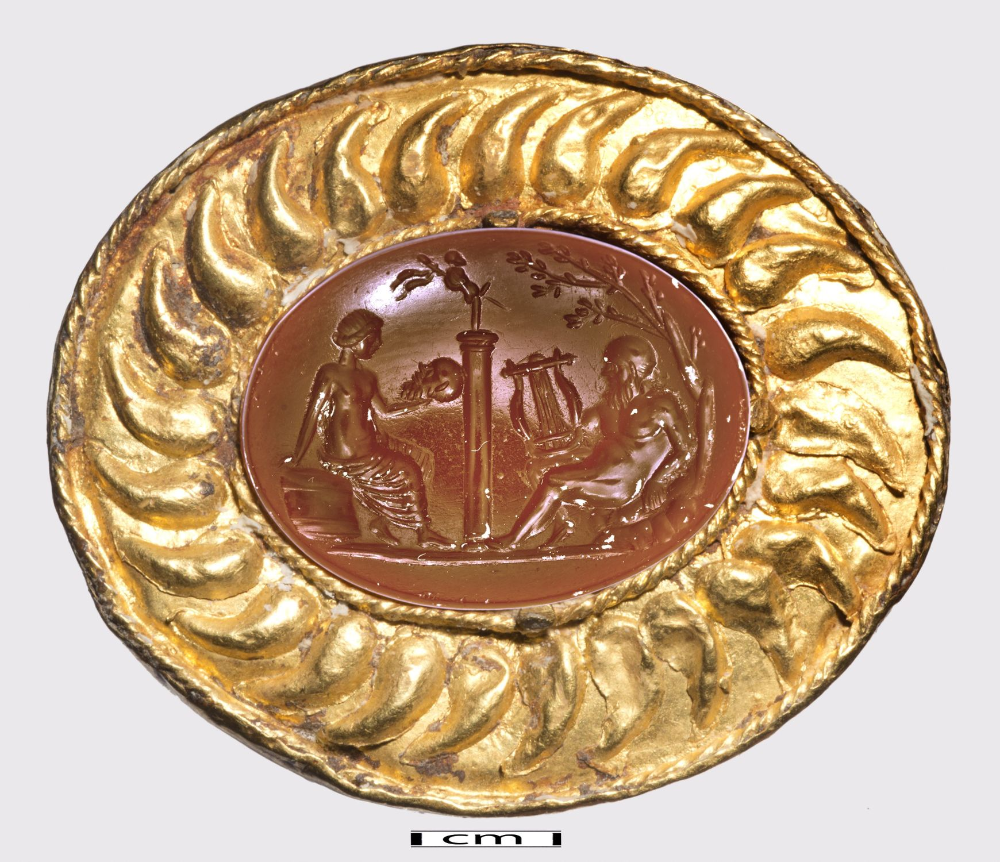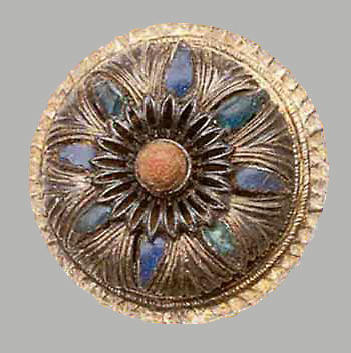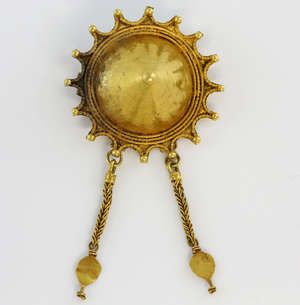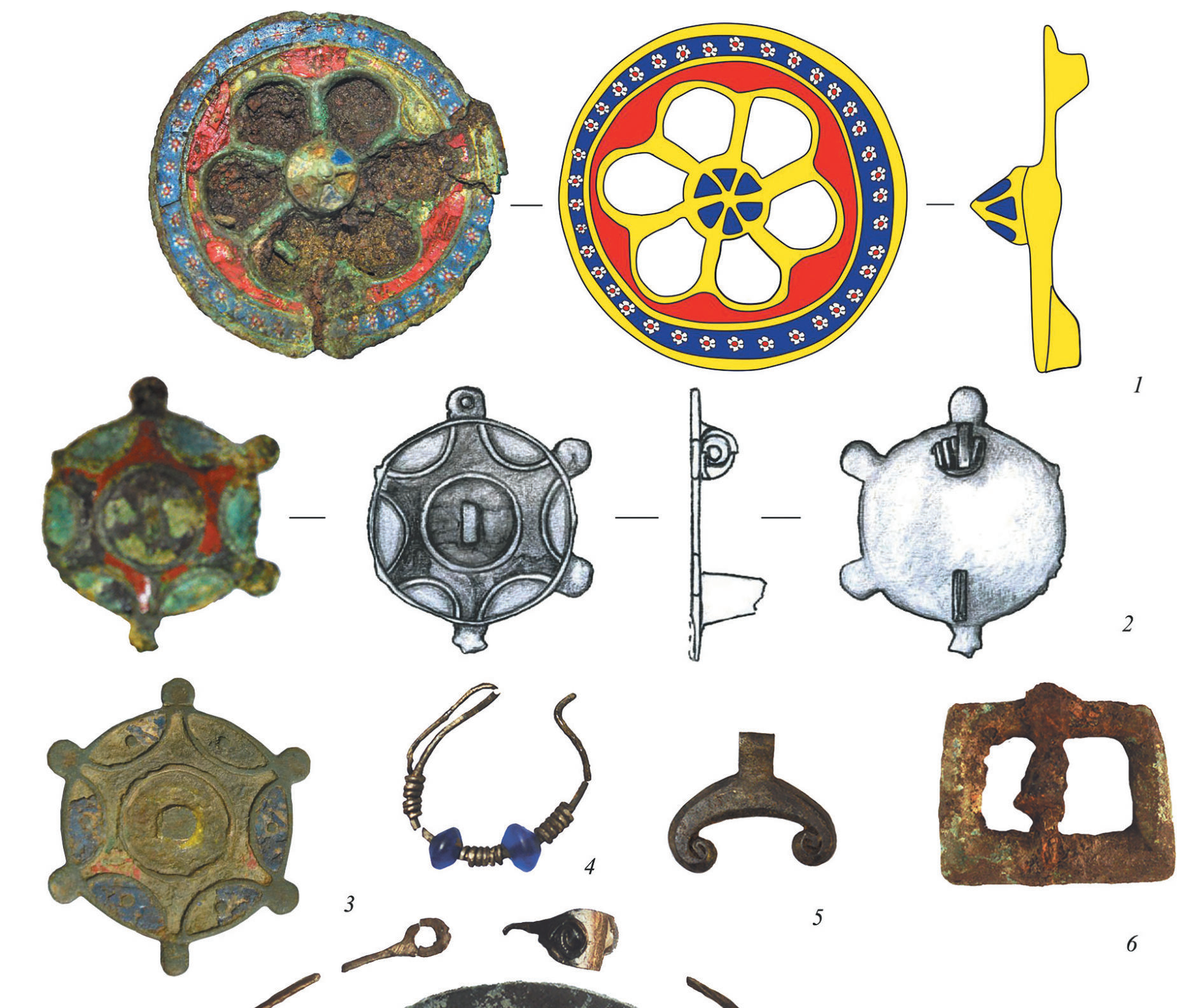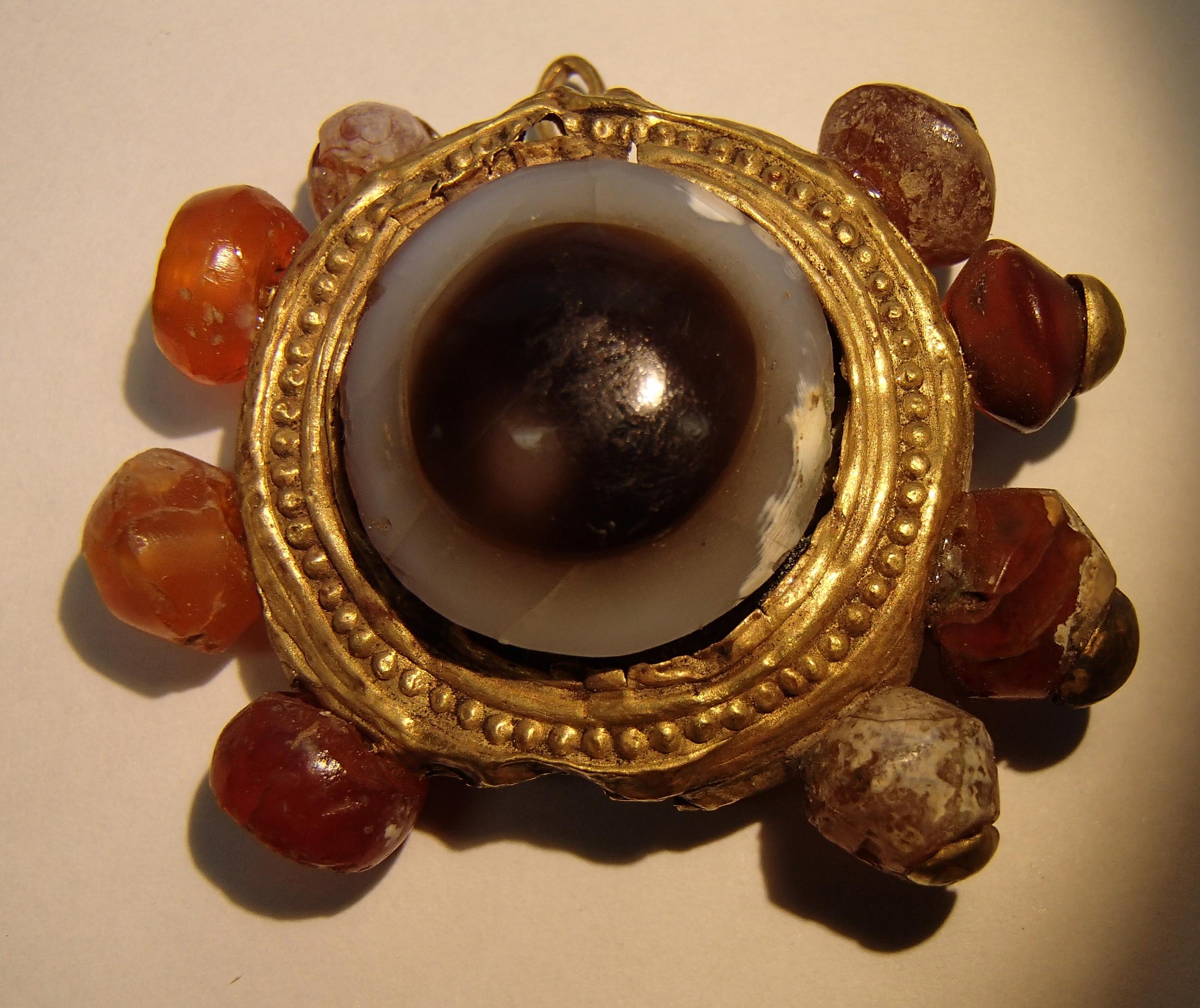
photo R. Isihidi after Annareta Touloumtzidou
“The small, circular fibulae in the form of a cut-out rosette or disc with repoussé rosette surrounded by a row of dots (fig. 43) forming concentric circles represent a rather special type. On the backside, a violin bow fibula is riveted. They represent Blinkenberg’s type XV.11 or Sapouna-Sakellarakis’ type X.Ah, with few known examples from sanctuaries at Lindos, Ialysos, and Despotiko, from graves at Kastelli Kissamou and at Assos (540-520 BC); 31 examples originate from the region of Smyrna (late 8th-7th c. BC), while a gold fibula from the Artemision at Ephesus is adorned with appliqué rosettes. These fibulae were dated to the Geometric-Archaic periods and were attributed to influences by the Hallstatt but new finds contradict this. Contrary to the fibulae from Kythnos, these are either plain or feature dots that form concentric circles. The circular fibulae seem to be contemporary to the spectacle ones and were possibly produced by the same workshops, at least those that share the same dotted decoration forming concentric circles83; the fibulae with the repoussé rosette look like bronze, circular attachments of Argolic shields that were produced by Corinthian and Argive workshops of the Archaic period.” [Annareta Touloumtzidou, Small finds from the sanctuary of Kythnos: The bronze finds – Part I, pp.505-506 https://www.academia.edu]


